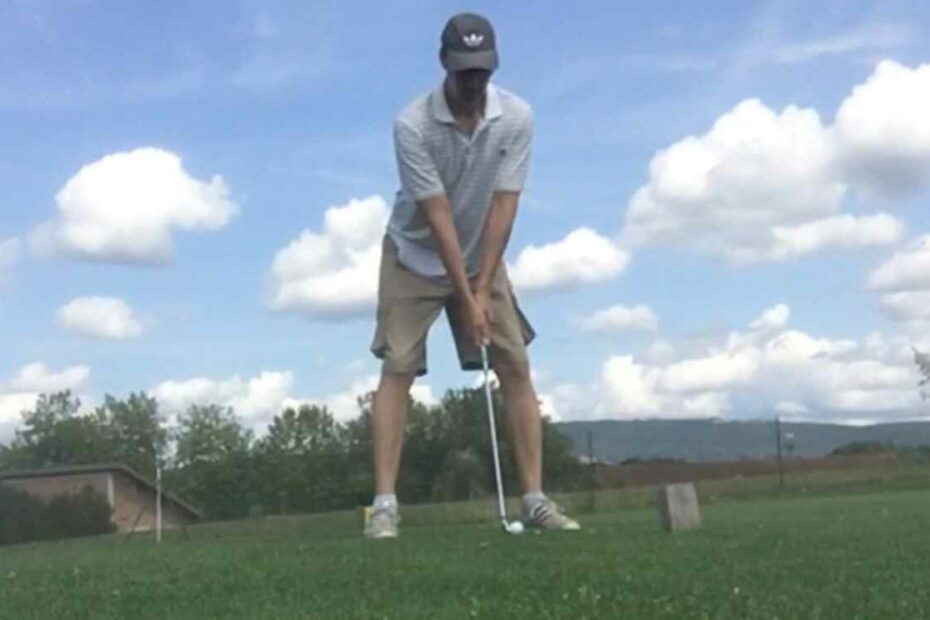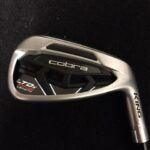Fitting is an area that interests me a lot. My opinion on it changes fairly often but as an equipment junkie, it is obviously something close to me heart. This is particularly true of iron fitting because I love irons more than anything else. I was naturally drawn then to a recent article on Golfwrx written by Terry Koehler when he says categorically that there is no logic to iron fitting.
Who is Terry Koehler?
Terry Koehler, otherwise known as the wedge guy is a true authority figure in terms of golf equipment and someone who writes usually interesting and always well-informed pieces on the golf industry in general. He has also been responsible for some of, in my opinion, the best in recent golf club design, especially wedges. He was the brains behind Eidolon or the SCOR wedge system, for example. He is, I believe, behind a new range of wedges and if you are interested, you can read more about that here.
Having a tagline saying that iron fitting is essentially devoid of logic was bound to catch my attention and I enjoyed reading it. With all respect to Terry, I didn’t really find the article itself that satisfying. It raised a number of interesting points but then didn’t really develop. It felt like it was the start of a series or a teaser for something more in-depth. So just what is wrong with iron fitting according to Terry?
The Different Types of Fitting
The first thing I should say is that the article isn’t anti-fitting. It simply points to a few things in the fitting process (at least how it is often carried out) that don’t make sense or are done wrong. The author did something interesting in that he looks at the broad range of fitting experiences that many golfers go though.
This is quite important in my opinion because fitting has become something of a catch-all term for anything which is not simply buying off the rack. For example, I recently went through a couple of different experiences that would come under the “fitting” umbrella. Firstly, I spent a couple of hours in my local golf shop hitting clubs (in particular irons) from all sorts of golf manufacturers.
I had data from trackman and the session was guided by the person who owns the shop. This guy is someone I know well and has done a huge amount of this sort of fitting. I was hitting the ball off mats and into a screen so the ball flight I saw was virtual. I was also hitting real golf balls that I would play during a round.
The second type of “fitting” took place going to three demo days at my local course. In these situations, I was hitting mainly long irons and fairway woods. I had numbers off trackman but could see the ball flight. I was hitting off mats and using range balls. The session was run by a rep from the company concerned.
Although these two types of fitting are similar in some ways, you can probably already see some differences. Terry talks about both of these as well as adding in a third option that many golfers consider, going to a fitting studio and getting custom fit by a brand that specialises in this.
The Problems of Iron Fitting
All this seems well and good so just what is the problem? Well according to the article, there are a few. The first big one is that the club used was a six iron. Through personal experience, I actually find that a seven iron is more common nowadays, but the point is still valid.
The logic goes that fitting someone for a six iron isn’t really that useful. As more and more golfers put fairways and especially hybrids in the longer end of the bag, a six iron is now one of the longer clubs in the bag. In fact, for many golfers, it might be the second longest or even the longest iron that they play. Given that the reason for using a 6 was because it was in the middle of the set, this changes things quite a lot. But is it important?
This is where the article fell down a little bit for me. I understand completely the point that was being made.-the six iron isn’t really representative of the irons we will be buying but it seemed like it was just a pretext for making a couple of gripes about what actually happened in his particular fitting process.
For example, one of the fittings didn’t look at lie angle at all. This is clearly a problem but I have gone through quite a few similar experiences and off-hand can thing of one time when the “fitter” (and in this case, fitter really isn’t the right word) didn’t’t even mention lie (and clearly wanted me to buy a set they had already in stock). However, this to me isn’t a problem with fitting in general but with one particular situation.
Distance and Fitting
The other example given was that the fitter compared a stronger-lofted iron’s distance with the distance Terry hit his own weaker-lofted clubs and tried to sell him on the distance gain. Once more, this is a real issue. If you go from an old school 35 degree seven iron to a cranked down 28 degrees, you will gain a lot of distance! Of course, for Terry, this isn’t an issue, he understands the effect of loft on launch and distance but for the average golfer getting a new set in a store, they might not realise this.
Even here though, I found this argument a little bit strange. Distance sells and of course the shop or manufacturer will be trying to push their latest and greatest distance iron. Once again though, this seems to me to be a problem related to a particular shop/situation than a general critic on fitting itself. It is certainly valid in terms of the idea that distance sells above all else, but this doesn’t really fit in with the theme of the problems in iron fitting.
Is Iron Fitting Wrong?
Overall then, I found this article both deeply interesting and a little bit frustrating. For example, the idea that fitting solely off a six iron doesn’t work makes a lot of sense to me. It seems a shame not to propose a better way, especially from someone who is truly an expert in the field. It certainly made me think about the advantages of single length irons in that one iron really should have the same specs as the rest of the set and so fitting just a six or whatever should carry through to the rest of the set.
Hopefully, there will be a follow-up on the article and having someone proposing a new way of getting fit for irons would certainly be an informative read and start at the very least a new discussion in the golf industry.





